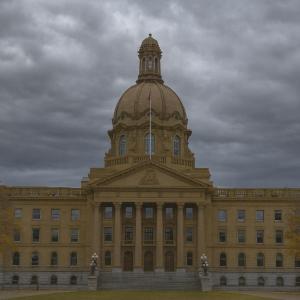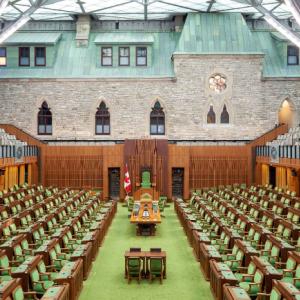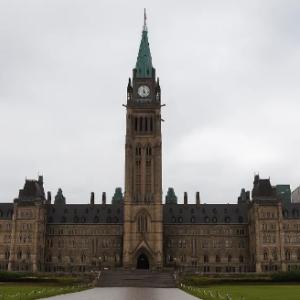It’s about the money
Make no mistake… it’s about the money.
Recent coverage of the crisis in primary care has led to a series of announcements by Ontario’s Minister of Health, Sylvia Jones, including for 78 new and expanded primary care teams across the province. The cost is pegged at $110 million to help connect more than 300,000 people to primary care. This is simply insufficient both in the short term and the long term.
Why did this take so long to come up with and if it is not about the money, as Minister Jones has expressed, then why only enough for 300,000 more people instead of for the 2.3 million Ontarians that the Ontario Medical Association (OMA) says are without a primary care doctor?
Prime Minister Justin Trudeau and Premier Doug Ford also recently came together to announce a three year health accord totaling $3.1 billion. Similarly, this federal-provincial agreement is insufficient both in the short and long term.
In my previous article I mentioned that family physicians are key to health care reform. So, allow me to comment on the latest announcements in Ontario from a family physician’s perspective.
One could say it was the COVID-19 pandemic that got in the way of addressing the access to primary care issue, but that simply isn’t the case. The issue surrounding the lack of access to primary care has been brewing for decades and had begun to boil over when the Ford government took office in 2018.
There simply has been no plan for the demographic shift of the health care workforce in this province for decades. There has certainly been contraction and expansion of medical school enrollment along with nursing training positions over the past 40 years, but no tangible plan for how to train and retain health care professionals for the coming demographic requirements and not for the retention of health professionals themselves. It’s a stunning failure to plan on many levels and by many governments through the years, particularly when it comes to family physicians.
For anybody caring to notice, the population was aging and growing, our working age population was “aging out,” and the ability of an aging population to create the productivity necessary for increased GDP to fund growing health care needs was and is highly questionable.
According to a recent OMA survey, 40% of Ontario’s doctors are considering retirement in the next five years. While politicians may believe this type of survey is not reflective of reality, do they really dare dismiss it given the current demographic realities?
An effective health care system requires 1) health care professionals, many of whom take over a decade to train, 2) infrastructure both in hospitals and the community, requiring lead time to build – sometimes decades, and 3) money – huge amounts of it. In the context of an already expensive system, the reality is that the structural changes and investments that are needed will require very significant investments, now and into the future.
The sheer volume of services that can potentially be provided is growing with new technologies and scientific advancements, and the need for care in the community, including home care and palliative care is growing. It is not a choice for government to sufficiently fund one or the other anymore. It must fund community care and hospital care with significant investments urgently or look to new approaches to fund health care.
Lack of care in the community, including home care and long-term care, impacts hospital capacity as can be seen with the growing percentage of hospital beds housing Alternate Leve of Care (ALC) patients and all the repercussions of this outcome. The growing pressures within hospitals have led to hospitals absorbing family physicians from the community.
While various representative groups laud the announcements from PM Trudeau, Premier Ford and Minister Jones, the public should understand how inadequate the investments are even though they are significant in amount. On the heels of Ontario’s Bill 124 being deemed unconstitutional there is now not only a volume problem but a massive, multi-billion-dollar hole in government’s budgetary plan. And the bleeding isn’t done yet.
Let’s strip away the political-speak: it’s about the money. It always was. As long as we have a finite single payer system, it always will be.
To address the lack of access in the short term, while government comes to terms with the reality that greater access requires greater funding, there are solutions that will help bridge the gap between the current dire situation and more sustainable future options. Here are a few suggestions.
1. In communities where hospitals are absorbing family physicians to care for ALC patients, create Urgent Care Centres off-site in the community until the gap in primary care can be alleviated. This can assist with retention of physicians and nurses in a setting less likely to cause burn-out than the hospital emergency department.
2. Create more long-term care beds by refurbishing already existing hotel spaces that can be brought up to long-term care standards and leased by the government until more long-term care spaces can be built.
3. Uncouple long-term care licensing structure from combined operational and capital to allow for operational aspect only. This will allow operators who are not performing as required to be removed and replaced.
4. Provide a streamlined mechanism to bring back Canadian physicians trained abroad at accredited medical schools, and provide more opportunity in the community for family practice residencies and less time in hospitals.
5. The Ministry of Health with the Ontario College of Family Physicians should coordinate outreach and recruitment efforts from accredited medical schools abroad to encourage family practice as a choice and which could include palliative care and long-term care training.
These suggestions would provide a stop gap measure to substantially reduce ALC patients in hospital and stop the pull of family doctors out of community practice and into hospitals.
From a family physician’s perspective, this is just the beginning of what could be done to achieve better access to care in Ontario. But of course, it would require even more funding than the PM, Premier and Health Minister would care to think about. With our single-payer system, it is about the money.
This article was originally published on Dr. Merrilee Fullerton's substack.
References:
Ontario Connecting Over 300,000 People to Primary Care Teams
https://news.ontario.ca/en/release/1004143/ontario-connecting-over-300000-people-to-primary-care-teams
Ontario’s doctors warn if worsening health-care crisis if family doctor shortage is not addressed immediately, Jan. 29, 2024
https://www.oma.org/newsroom/news/2024/january/ontarios-doctors-warn-of-worsening-health-care-crisis-if-family-doctor-shortage-is-not-addressed-immediately/
“I am burnt out from family medicine”
https://ottawacitizen.com/news/local-news/i-am-burnt-out-from-family-medicine-ottawa-doctor-who-led-advocacy-campaign-calls-it-quits
Shawn Whatley: Ontario’s health-care agreement with Ottawa will not fix broken system
https://nationalpost.com/opinion/ontarios-health-care-agreement-with-ottawa-will-not-fix-broken-system
Medical Students in Residential Aged Care: A guide
The Clinical Teacher, 2020 May 26
https://www.ncbi.nlm.nih.gov/pmc/articles/PMC7891668/
Dr. Merrilee Fullerton will be publishing a book that will provide an account of her experience of the early pandemic years as Ontario’s Minister of Long-Term Care.









